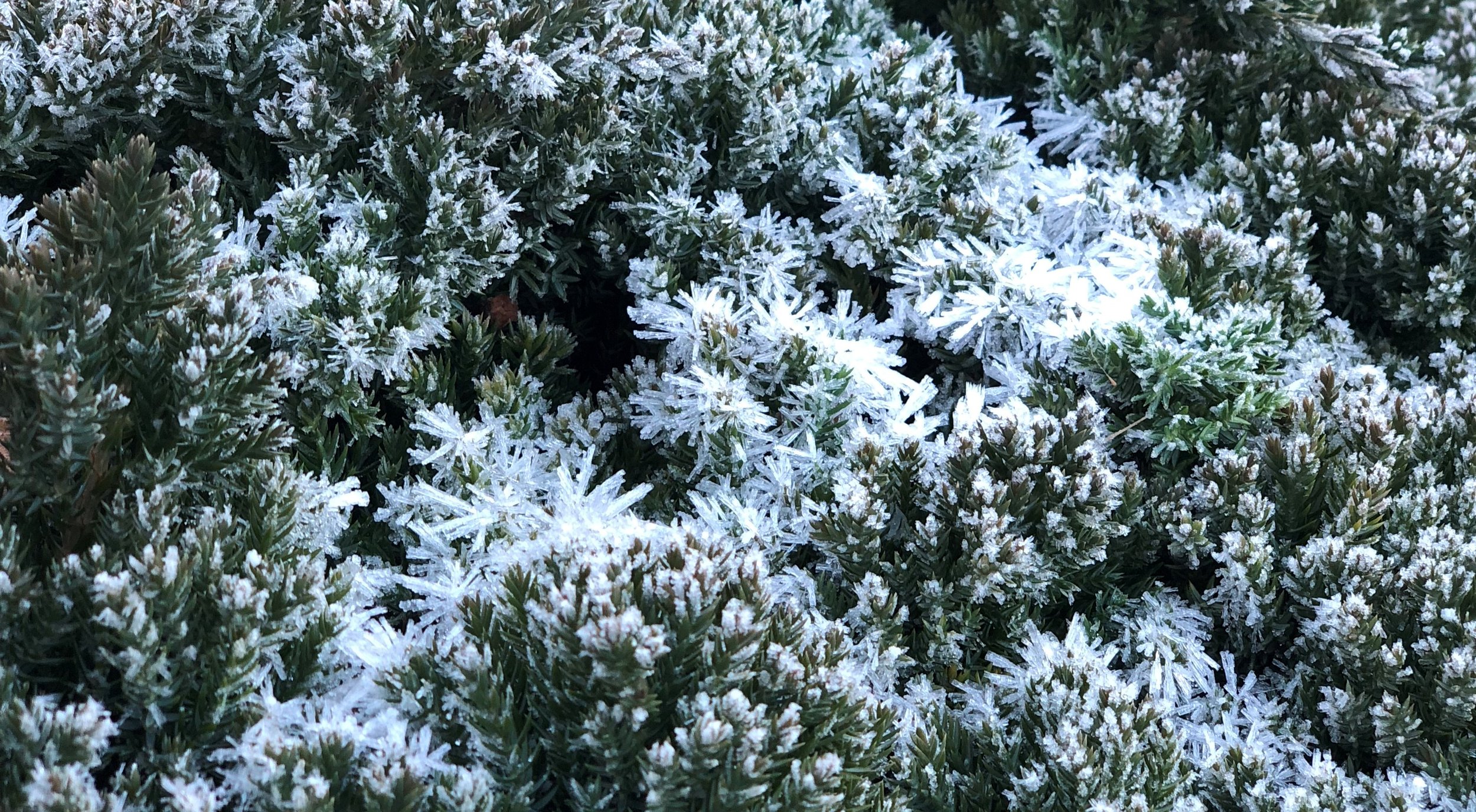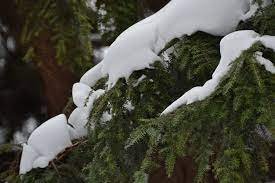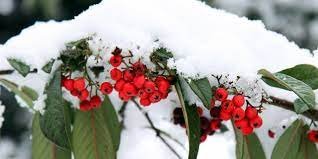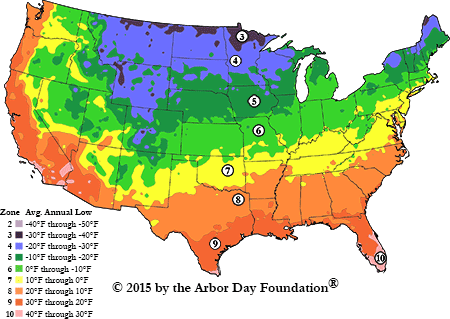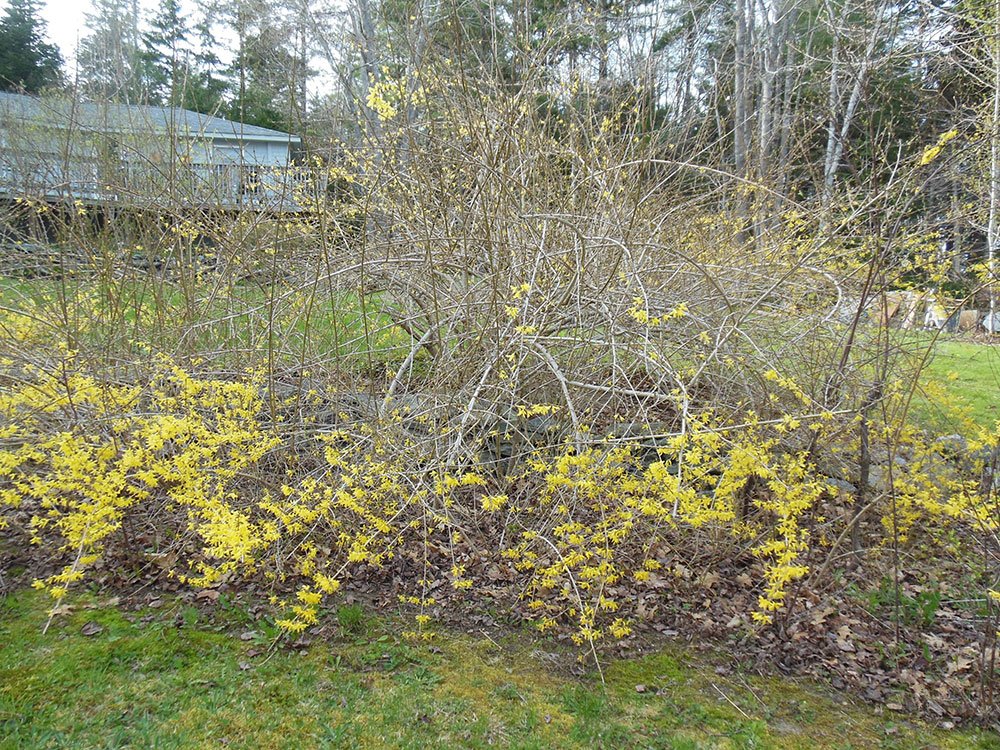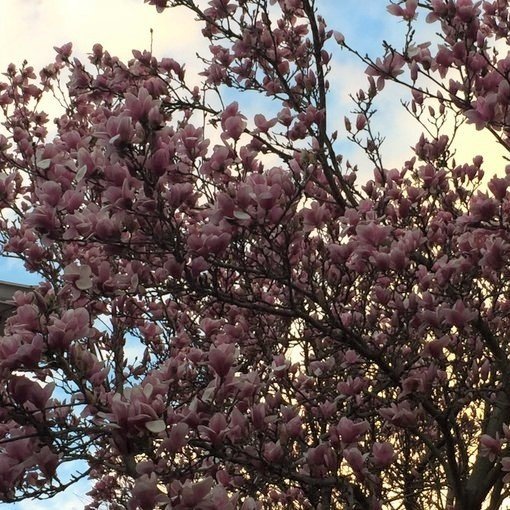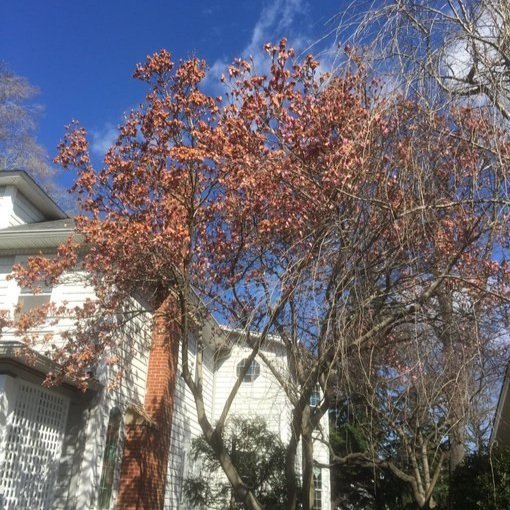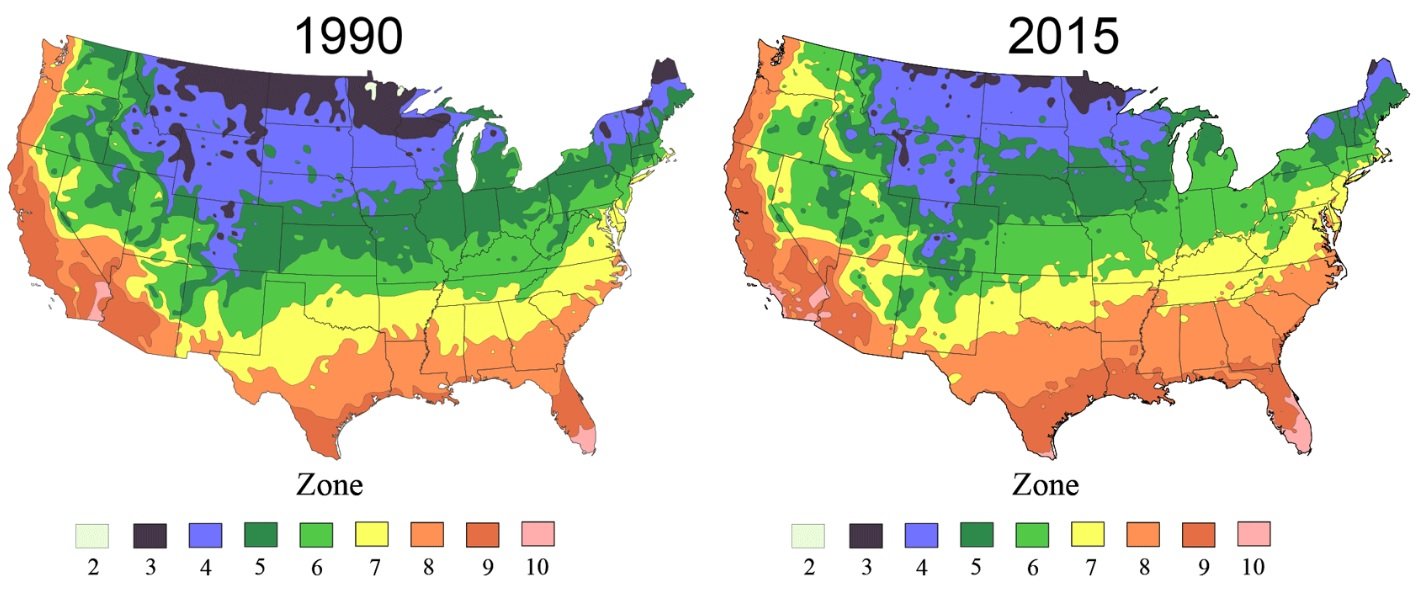Are The Cold Temperatures Bad For Our Plants?
In Short, It Depends
We wish there was a simple answer! Cold temperatures are not necessarily life-threatening to plants. There are pros and cons to just about everything in life, and this is no different. Winter brings about multiple environmental changes to the landscape, and each one can have a beneficial or adverse effect on each specific plant. We’re going to roll through the list here, breaking down how certain types of weather and environmental conditions, how they affect the plants, and how we humans have used weather data to learn more about the life cycles of plants.
New England weather is always changing. If you don’t like the weather, just wait! I’m pretty sure that is the saying around here. It takes rugged people, animals, and plants to live here year-round. Goodbye, fair-weather friends… (you know who you are, hummingbirds and butterflies)
The rest of us get to stick out the cold months and find the joys in skating, sledding, and snow angels. We know that animals and people can migrate, but what about the effect of the frigid winter months on the plants? How do they survive? In this post we will explore three aspects of winter and how they are beneficial or detrimental to plants’ health and survival:
Lower Temps, Shorter Days
Physical Effects Of The Weather Conditions
Unpredictable Temperature Variations And Weather Patterns
Lower Temps, Shorter Days: How Do We Know Our Plants Will Survive Through The Winter?
Botany and horticulture have been in practice since the times of ancient Greece. Plants have been classified, labeled, trialed, studied...you name it, someone has done it! We plant nerds love delving deep into the science behind how plants grow, what affects their health, and why.
Adapt To Survive.
Canada holds nearly a third of the world’s Boreal forests.
Plants, like all organisms, must adapt to survive. Plants in our area have evolved to shed their leaves and withstand the winds and cold for half the year by going through a dormancy period (partial dormancy for evergreens) to conserve energy. Some plants even need their seeds to freeze in order for germination to occur at all!
Plants that are hardy to our zones have developed ways to conserve energy and withstand the winds and cold for half the year: some perennial flowers, herbs, and grasses will die back all the way to the ground, storing all energy in their roots. The leaves on deciduous shrubs and trees will die back as they redirect energy stores into the roots. Evergreens, on the other hand, never fully go dormant. The cold itself is not usually a danger to evergreens, they are predominant in northern climates for a reason. They keep their foliage, remaining active in producing oxygen and sequestering carbon, but slow their transpiration rates. Boreal forests, for example, produce a large portion of our oxygen and sequester carbon year-round.
What Does It Mean When We Say A Plant Is “hardy”?
Scientists have paired meteorology and plant sciences to develop a system that defines the hardiness of plants, aka where they will grow.
Enter the Plant Hardiness Zone Map. These maps are produced around the world. Here, the United States Department of Agriculture tracks environmental conditions throughout the United States, specifically temperature readings, and develops “zones” based on the average lowest temperatures recorded in specific areas each winter. These maps set the standard for the industry. Plants are assigned to a range of these zones based on the range of temperatures they are able to tolerate. Mangroves, for instance, are only found in zones 9-12, much closer to the equator. A specific plant’s hardiness zone is usually determined by folks at universities or public gardens where they are trialed and evaluated over the course of a few years. The plants that live are considered hardy for the area meaning they usually won’t die during our coldest temperatures which can vary from year to year.
Is There A Catch? There’s always a Catch, right?
Unfortunately, this doesn’t mean that the plant will necessarily flower and flourish within those designated zones. For example, the flowers on the Mophead Hydrangeas, or Hydrangea macrophylla, can often die off during the winter months. We’ll tell you why in the next section, but if you don’t want to wait, go read our August Blog to get a head start on the Hydrangea facts.
Physical Effects of Winter Weather
Sunshine, wind, snow, and ice. It’s all about balance, folks.
Snow can be both good and bad. A gradual buildup of snow is beneficial for many plants as it acts as an insulator to protect the roots and a physical barrier against wind and sun for the buds. Excessive sunshine, wind, and unusually cold temperatures can dry out the landscape and cause sunscald, dieback, and leaf burn. Deciduous plants usually cop the sunscald and dieback in their softer tissues, like new buds and younger twigs that have softer bark. The wind and the sun reflecting off the snow are often the greater dangers to our evergreen friends. You may have noticed the evergreens near an open area with burnt leaves if there is no wind block. Wind and sun protection are two of the reasons we landscapers will often burlap evergreens. You can find a great breakdown of all the types of plant damage that are associated with the winter season through the University of Minnesota Extension Website. They may be in a different area of the country, but the hazards of the Midwest winters are much the same as ours here in New England, at least as far as plants are concerned.
Snow As An Insulator
Winters with little snow are actually detrimental in many ways. Picture snow acting like the cooler where you have put all your Moxie (which you can’t find right now except online for $60 a 12-pack...yes, I am from Maine, glad you asked!). The cooler protects the fragile liquid-gold from freezing or getting too warm by slowing the temperature fluctuations. A gradual transition to winter is more ideal for plant survival. The snow covers the ground, protecting the roots and soil microbes, and covers the lower branches on shrubs.
Circling back to those hydrangeas real quick: Have you ever seen hydrangeas that only have blooms at the bottom of the shrub? This is because those buds were insulated by the snow. If we don’t get enough snow, ALL of the buds could die off and you’ll be left with a shrub full of healthy, beautiful leaves and not much more. Similarly, in extreme winters, you will see forsythia bloom more profusely on the lower limbs and the upper branches will have lost blooms to winter kill. The snow also protects perennials from the same harsh temperature swings.
This Forsythia surely could have benefitted from more protection over the winter!
Overloaded: Snow & Ice
Most often in late fall and/or late-winter to early-spring, we may have storms in which the weather is warm enough to produce what might be described as cement! You know, that stuff that is only an inch deep but when you push it with a shovel you want to lay down and die. Yeah, that stuff. Now imagine standing with your arms spread out like a tree throughout one of these storms, with that cement coating your limbs. Then hold that position for 2-3 weeks. It sounds like some version of torturous yoga, right?
This River Birch in southern New Hampshire suffered serious damage during the heavy ice storm in 2008.
Ice storms can coat the limbs and branches in much the same way, adding tons of weight that the plants are not equipped to bear. Snow and ice can be particularly damaging when leaves are still on trees. The more surface area the snow and ice have to cling to, the greater the risk for snapped limbs, split trunks, and bendy Gumby trees like the birch in the photograph. Because evergreens keep their foliage year-round, they are very susceptible to this form of damage.
Storms aren’t the only cause of snow load damage - a buildup of snow can slide off of your roof well after a storm and crash down onto your delicate shrubs. Burlap and wooden structures can protect your plants. Even tying up shrubs with twine can help! If you’re standing in the middle of that “cement” snowstorm with your arms pointed up, less snow would settle on your limbs and cause strain. Keeping up on your pruning can prevent this as well as your plant will be pruned for structural integrity as well as beauty. If you’re not sure where to start, we can help you out.
Unpredictable Temperature Variations and Weather Patterns
Temperature Extremes
Even though a plant might be rated to do well in our area, the fluctuation in temperatures can cause issues. We have all experienced a 70-degree day in December and even January in the past 5-10 years. When there are warm-up periods followed by subzero temperatures, the plants can suffer, like these Magnolias in Washington, D.C. after a hard freeze in March of 2017. All of the buds froze up, there were no blooms that year. This Twitter user posted a before & after of the effects of the freeze on some Magnolia buds:
Oh Mother Nature did you really have to do this? @capitalweather pic.twitter.com/Dn5Ac552Df
— tizzzielish (@tizzzielish) March 4, 2017
How do we know which plants are sensitive vs. tolerant of volatile temperature swings? Once again, we’re going to get sciencey. This time, it’s about Growing Degree Days.
Degree Days is a unit of measure scientists use to calculate heat accumulation to predict the timing of events within the life cycle of an organism. They are not a tool that is exclusive to plant life cycles, but for the purpose of this blog we will be focusing on Growing Degree Days, or GDD’s. GDD’s measure the accumulation of heating temperatures from a certain base temperature where the development of a specific plant will start to occur. Each organism has its own life cycle and therefore different degree days.
Picture an hourglass full of a finite amount of sand. When the temperatures rise above the plant’s starting temperature for growth, let’s say 65 degrees, the hourglass is set upright and sand starts to run through to the bottom. If temperatures drop below 65 again, the hourglass is put on its side, the development is paused. When the mercury rises up beyond 65 degrees, the hourglass is set upright once again, the sand flowing to the bottom. The sand only flows in one direction, there is only forward growth. The sand will continue to flow in that one direction, pausing if temperatures drop, and will stop only once the amount of heat rising beyond 65 degrees has accumulated to a certain amount.
There are no take-backsies. Once all the sand has moved through, the growth of that plant can occur even if the timing is premature within the season. Plants are often “tricked” into kicking off their growth and development cycle early by a stretch of unseasonably warm temperatures, then becoming more vulnerable to the return of winter weather, or even by an unexpected cold snap in the springtime. Degree Days are not only used for predictions of a plant’s life cycle or an insect’s emergence from dormancy, there are different types that are used for man-made engineering. Check out this page to learn about the applications of Degree Days in the building industry, specifically engineering buildings to have more sustainable heating and cooling systems!
Climate Change & How This Is Affecting Our Winters
Climate Change is, unfortunately, now a part of our lives. We see it during our summer months and winter months. The frequency of temperature extremes has been increasing and, in time, this will become more evident in how plants survive our New England winters.
The zone maps are updated as the climate changes. As the zones shift, we’ll find plants growing further north than ever before. You can see significant changes in the map-comparison image. If we don’t slow the progression of climate change, we’ll see mangroves growing further north into Georgia and South Carolina. No offense to the tropical plants, but we’d rather not see that happen.
Hopefully, we can come together as a global society to slow climate change as eventually, we will run out of time. A great book to read if you are still reading this is Nature’s Best Hope by Doug Tallamy. This book is extremely informative and gives homeowners a list of actions they can take to help the environment we live in. It fueled the fire for me as a landscape professional to do what I can to educate clients and select better landscape practices that enhance the ecosystem we all call home!
What To Do To Prevent Winter Damage To Your Plants
Right Plant, Right Place
Stay up to date on your defined Plant Hardiness Zone. They change with the climate, so make sure you are looking at the most updated one. The USDA website is your best resource for this. Consider the local environment where your tree or shrub will be planted. If it’s on top of a hill, it will be more susceptible to wind and colder temperatures. Your property may be in Zone 5a, but that hilltop may experience conditions more akin to Zone 4b, you may want to search for plants that are hardy to Zone 4b or 4a. Alternatively, you could have a sunny spot that is well protected from the wind that creates a Zone 6 microclimate. Observe the conditions over time and take note of which plants thrive or suffer, then go from there.
We installed a burlap windbreak to protect this hemlock from getting windburn from gusts that blew across the field next door.
Protect Your Investment
If you have plants that will face lots of wind and sunshine, using burlap can protect the plant from getting burnt.
Got shrubs under the roof line? Make sure they aren’t vulnerable to snow load breakage. Deciduous shrubs with open branching habits are less likely to get damaged from snow loads. However, we say it’s better to be safe than sorry. Solid structures, burlap, or tying the shrubs up with twine can prevent or reduce potential snow load or ice damage.
Proper Pruning Can Prevent Winter Damage
Practicing proper pruning techniques, in addition to improving or maintaining beauty and aesthetics, can improve structural integrity by reducing surface area for wet snow and ice to sling to and by eliminating branches that would be likely to break or split and cause damage to the plant.
That’s all for now, we wish you all a happy holiday season, we’ll see you in 2022!
This article was written by Leigh Lessard, Director of Landscape Maintenance with editing, research, and publishing help from Daisy Chinburg, Landscape Designer.
Questions?
Give us a call* at (207) 438-9995 or visit our contact us page here on our website and ask for us to get in touch with you. Don’t forget to mention reading this blog!
*If you are a current customer we ask that you please contact your regular project manager as our office staff is currently loaded with work and may not be able to get back to you as quickly as we’d all like. Thanks in advance!

